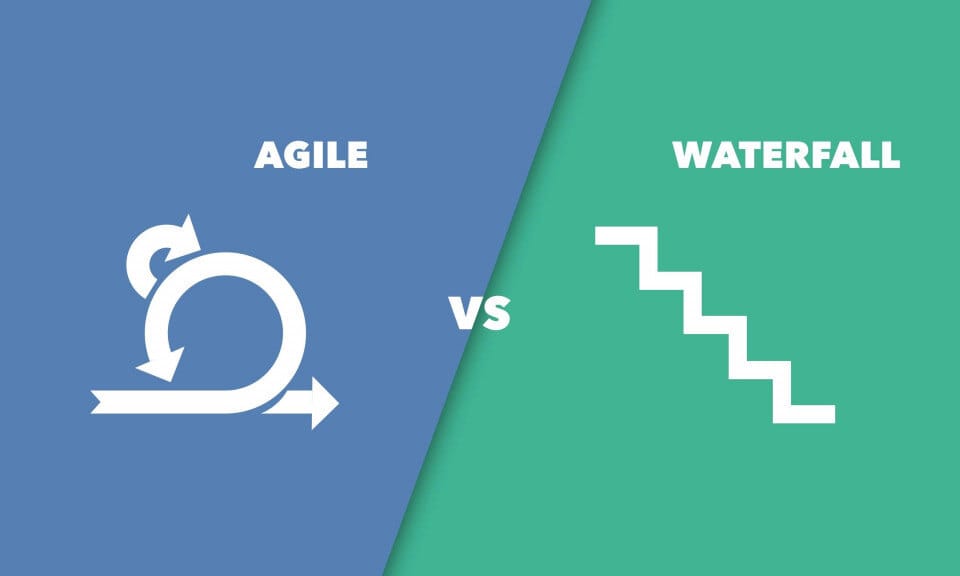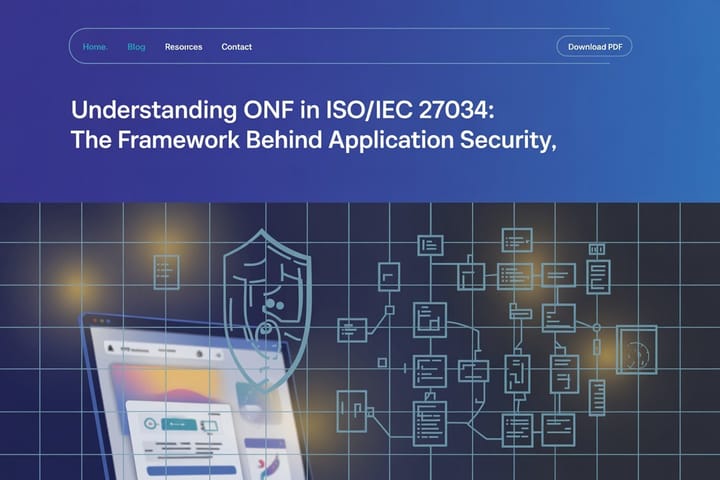Agile vs. Waterfall: with Development Certification

The critical choice to be made before starting any development project is the approach the team will take to execute it together. This decision can often lead to intense discussions as there are two significant development methodologies to consider. Essentially, an agile development certification methodology specifies the manner in which the tasks of a project will be structured and carried out.
Agile and Waterfall represent the two primary development methodologies extensively utilized in software development, consequently affecting project management practices. The fundamental distinction between these methodologies lies in their approach to project execution. In the case of a waterfall, projects are carried out sequentially, whereas agile projects are characterized by an iterative and cyclical nature.
Both the agile and waterfall methodologies come with their own unique advantages and disadvantages. In general, both methodologies can bring value to a software development team. The decision of which one to choose largely depends on the specific project type and the prevailing circumstances.
According to a poll conducted in 2019, less than 20% of professionals reported that their organizations employ the waterfall methodology. On the other hand, a significant majority of 81% stated that their organizations opt for the agile methodology. Additional research conducted by HP reveals that 54% of agile users consider enhanced collaboration and teamwork as the primary motivating factor for choosing agile over waterfall.
Want to know more about Agile Development Certification? Visit our course now.
Waterfall Methodology and Agile Development Certification: A Comparison
The software development process following the waterfall approach is characterized by a highly sequential structure, consisting of seven distinct phases. These phases adhere to a fixed order, where each phase must be completed before proceeding to the next. In the waterfall methodology, the initiation of phase two is contingent upon the completion of phase one.
The phases of the waterfall methodology are:
- Conception: During the idea stage, developers make decisions regarding what they intend to design and the underlying reasons behind their choices.
- Initiation and Analysis: In this stage, the focus is on gathering and documenting the necessary requirements for the software development project. This includes identifying and documenting both system and software requirements for the product or project.
- Design: During this stage, developers ascertain the desired functionality and behavior of their software and identify the essential components that need to be coded. They define how they want the software to operate and determine the specific pieces that are necessary for its implementation.
- Construction and Coding: In this stage, each unit of the software is coded and tested incrementally, while adhering to the software architecture outlined during the design phase. The process involves coding and testing individual units of the software and progressively integrating them together.
- Testing: This phase entails conducting a comprehensive system-wide test of the software, which may involve user testing, bug testing, and addressing any identified issues. The aim is to ensure that the software operates as intended and that any bugs or issues that arise are promptly resolved.
- Implementation: Often, this stage involves delivering the “completed” product to the customer or rolling out the system-wide software.
Benefits of the Waterfall Methodology
Due to the increasing popularity of Agile methodologies, there is a tendency to label Waterfall as “inferior” or “obsolete”. Some product teams may feel tempted to adopt Agile simply because it’s a trend, even though it may not necessarily be the optimal choice. It’s important to recognize that Waterfall has numerous strengths, including its proficiency in various areas.
- Clear Framework: Prior to the commencement of the project, there exists a distinct comprehension of the project timeline and deliverables. The development team and their customers mutually establish a comprehensive understanding of the entire scope of the project beforehand.
- Documentation: Meticulous documentation of each phase in the process is undertaken to eliminate any potential misunderstandings or shortcuts.
- Shared load: The development team’s time and attention are not exclusively consumed by the project at all times. Depending on the specific phase, individual team members can allocate their focus to other aspects of their work.
- Hands-off approach: This approach enables a more hands-off role for the customer. Once the initial design and project plan are established, there is minimal need for continuous customer involvement until the review phase.
Potential Drawbacks
There is no universally applicable software development approach that guarantees success for every team and situation. The waterfall approach does have a few limitations or drawbacks.
- Less customer involvement: Not every type of product is suitable for a hands-off approach. Some customers may desire greater involvement as the project progresses. Without a framework to facilitate such involvement, the waterfall approach can result in frustration for both parties involved.
- Changes can be difficult: The fundamental principle of the waterfall methodology is to adhere to defined steps and a predetermined timeline. Once these components are established, it becomes challenging to introduce changes when the development team faces obstacles. Considering the importance of adaptability in software development, it can be particularly difficult for customers to fully grasp the project’s scope before it initiates.
- Last-minute testing: Once again, one of the disadvantages of the waterfall approach compared to agile is its lack of strict time constraints. Although this can sometimes result in an efficient project, more frequently development projects start to fall behind schedule. During the coding phase, a common issue arises known as “The first 90 percent of the code accounts for the first 90 percent of the development time. The remaining 10 percent of the code accounts for the other 90 percent of the development time.” As a consequence, the final testing phase often becomes rushed, potentially leading to the presence of numerous software bugs.
Is Waterfall Right for Me?
So, in which scenarios do these advantages become prominent?
In the tech industry, speed often takes precedence. However, this focus on speed can sometimes lead to compromises in stability, organization, and clear frameworks. The waterfall method is particularly suitable for teams that possess well-established and organized development practices. The project management ideology of waterfall is excellent for delivering consistent and reliable results for software or other systems that don’t undergo rapid changes. On the other hand, Agile methodology is a significant driver of innovation and encourages rapid and flexible thinking. Sprint planning and extreme adaptability can be highly beneficial, but there are instances where those characteristics may not align with the specific requirements of a product.
In the simplest terms, if agility is not a requirement, Agile may not be the best choice. The most effective project managers possess a deep understanding of their teams, testers, and available resources.
With the increasing prevalence of remote work, there are situations where Waterfall can provide a valuable level of structure to development, particularly when it is necessary for a manager. This is particularly true when teams are simultaneously working on multiple aspects of a system. If one person’s work needs to be completed before another can begin, Waterfall fits excellently into that scenario as it is designed to accommodate such dependencies. In a chaotic environment, excessive flexibility can bog down the subsequent phases of development.
While Agile is commonly perceived as the flexible alternative (and that perception is generally accurate), there are specific areas in 2021 where Waterfall can prove to be a more adaptable philosophy. Time-boxed sprints may not be feasible when individuals are working in the presence of their children or have to attend to distractions such as a dog chewing on the table. These circumstances can disrupt the smooth progress of sprints. Importantly, this does not apply universally but rather represents a possibility. Effective project managers will attentively listen to the situation, learn from their staff, and make decisions accordingly.
Agile Development Certification
The major difference between agile and waterfall methodologies can be summarized as follows: the waterfall approach prioritizes upfront planning, whereas the agile approach emphasizes adaptability and engagement.
Within agile development, there exist various iterations that share fundamental similarities. These include:
- Extreme Programming (XP)
- Scrum
- Kanban
- Lean Software Development
- Agile Unified Process

The agile methodology encompasses two essential elements: teamwork and time. Rather than creating a linear timeline for a single extensive software development project, agile divides the project into smaller, manageable deliverable pieces. These segmented phases, known as “sprints,” are time-boxed and typically span a few weeks. Upon completion of each sprint, feedback from the previous phase is incorporated to plan the subsequent one.
Core Principles of Agile Development Certification
Based on this collaborative and time-sensitive approach, agile development projects adhere to several fundamental principles.
- Adaptability: Agile development emphasizes the significance of flexibility in modifying design, architecture, requirements, and deliverables throughout the process.
- Customer involvement: Due to the continuous changes in design and deliverables, close collaboration between the customer and the development team is essential in agile software development.
- Lean development: Simplicity is highly valued in agile development. If it is possible to achieve the same end result with two steps instead of five, agile development will design the software accordingly, aiming for the most streamlined solution.
- Teamwork: As mentioned earlier, teamwork is highly prioritized in agile methodologies. Agile teams continuously evaluate their performance and make necessary adjustments to enhance project effectiveness. An example of this is Extreme Programming (XP), which emphasizes collaborative development by encouraging developers to work in pairs. This approach operates on the belief that two minds working together yield better results than working individually.
- Time: Agile development adopts a distinct approach to time management during projects by breaking them down into small, well-defined units. These units of time, known as “time-boxed sprints” as mentioned earlier, allow for focused and iterative progress within specific timeframes.
- Sustainable: Rather than prioritizing faster deadlines at the expense of an incomplete project, agile development emphasizes the importance of establishing a sustainable pace for software development.
- Testing: In contrast to waterfall approaches, which typically have a dedicated testing phase, agile approaches advocate for testing throughout every phase of the project.
Agile Development Certification Benefits
The advantages of agile development are directly related to customer satisfaction and the final outcome of the development project. While adopting the agile approach may require some adjustment, the effort invested can be worthwhile for the appropriate development team.
- Stakeholder involvement: Adopting an agile approach to development enables and actively promotes ongoing engagement between the development team and the customer.
- Flexible deliverable: Agile methodology enables stakeholders to prioritize deliverables based on their importance. In essence, if a customer wishes to release the core software functionality before the complete suite, agile allows for precisely such flexibility and customization.
- Adaptability: As mentioned earlier, adaptability is a critical aspect and significant benefit of agile development. As customers gain a clearer understanding of their software requirements, the development process can be adjusted to accommodate their evolving needs. This flexibility allows planned sprints to be adapted accordingly.
- A higher quality and user-friendly product: Due to the ability of customers to provide feedback after each sprint, products developed using the agile methodology frequently result in highly user-friendly outcomes.
Potential Drawbacks Agile Development Certification
Similar to any singular development approach, agile may present drawbacks in certain settings or for specific teams. However, with proper planning and a committed team, these additional challenges can be successfully overcome.
- Intense commitment: In contrast to a waterfall, agile development thrives when the entire development team remains dedicated to the project throughout its duration. This can pose a challenge for development companies juggling multiple simultaneous projects or even for individual developers.
- Potential for a higher cost and longer deadline: Although time-boxed sprints facilitate planning, there is always a possibility that certain deliverables may not be completed within the designated timeframes. This is a common reality in development projects. To address this, creating additional sprints may be required, which could result in increased project costs for the customer.
- Communication: Given that agile methodology necessitates a strong emphasis on collaboration, development projects employing this approach will similarly demand a high degree of communication.
Is Agile Development Certification Right for Me?
Agile development revolves around creativity, teamwork, and intense focus sessions. When executed effectively, it can foster an agile team that thrives on iterative improvements based on customer feedback. However, at its worst, it can devolve into disarray with a backlog of tasks and distorted development phases.
The teams that can derive the most benefits from Agile are those who feel constrained by Waterfall and aspire to unlock their team’s creativity. To succeed, they will require highly skilled managers who can strike a balance between an iterative approach and the inherent chaos of the development cycle. Agile has the potential to eliminate bottlenecks and unleash the capabilities of product teams, while also preventing burnout and avoiding a cluttered landscape of unfinished software projects.
How can you determine if Agile is the best approach for you? In reality, you likely already have an idea. If your team operates in bursts of creative energy while utilizing organizational tools like Kanban boards to maintain clarity, you have the necessary resources. If your projects demand creativity, frequent adjustments, and a customer-centric final product, you have the motivation. Lastly, if your management team can harness this creative potential, promote employee well-being, and foster a healthy work-life balance, you have the opportunity to succeed with Agile.
Agile vs. Waterfall in the Best Project Management Software
How do the leading project management software solutions in the market compare in terms of agile vs. waterfall? To assess this, we examined the most reviewed project management tools, focusing on reviews that specifically mention agile or waterfall. Each of the products mentioned below has been verified by customers.
Among these project management tools, agile is referenced more frequently than waterfall across all products. Out of nearly 400 reviews that mention agile or waterfall, 83% specifically highlight agile. This observation aligns with the fact that agile development is more widely adopted than waterfall development. Consequently, it is more common to find project management software explicitly designed for agile rather than waterfall methodologies.
Here at CourseMonster, we know how hard it may be to find the right time and funds for training. We provide effective training programs that enable you to select the training option that best meets the demands of your company.
For more information, please get in touch with one of our course advisers today or contact us at training@coursemonster.com




Comments ()